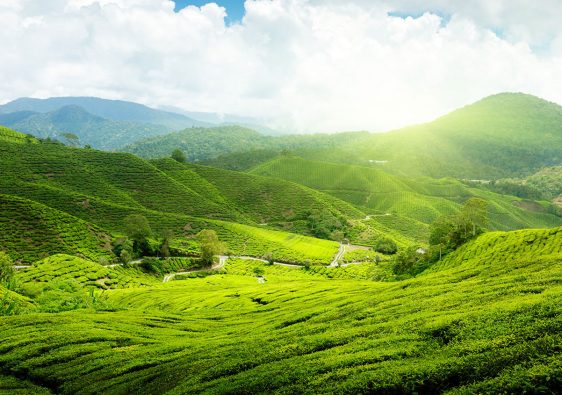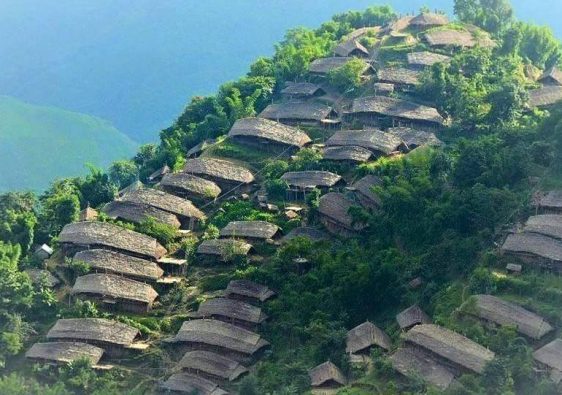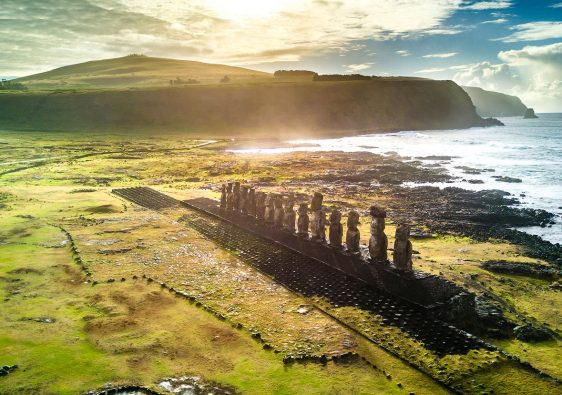Diwali, also known as the Festival of Lights, is one of the most significant and widely celebrated festivals in India. People across the country celebrate this festival with great enthusiasm, lighting oil lamps, decorating their homes, exchanging gifts, and enjoying delicious sweets. While Diwali is celebrated in every corner of India, there are some places that are especially famous for their grand celebrations and vibrant atmosphere.
Here are some of the best places to celebrate Diwali in India:
1. Ayodhya, Uttar Pradesh

Diwali holds special significance in Ayodhya, Uttar Pradesh, as it is believed to be the birthplace of Lord Rama, one of the most revered deities in Hinduism. The festival of Diwali in Ayodhya is celebrated with great fervor and enthusiasm.
Here’s how Diwali is typically celebrated in this sacred city:
- Ram Lila Performances: In the weeks leading up to Diwali, elaborate theatrical performances called “Ram Lila” are organized in Ayodhya and other parts of India. These performances depict the life and adventures of Lord Rama, culminating in his victory over the demon king Ravana. Ram Lila performances are a significant part of Diwali celebrations in Ayodhya, drawing large crowds of devotees and tourists.
- Grand Processions: On the main day of Diwali, there are grand processions taken out in Ayodhya, featuring idols and effigies of Lord Rama, Sita, Lakshmana, and Hanuman. These processions, accompanied by devotional music and chants, move through the city streets, creating a vibrant and festive atmosphere.
- Illumination of Temples and Homes: Ayodhya is adorned with thousands of oil lamps and decorative lights during Diwali. Temples, homes, and public buildings are illuminated to celebrate the victory of light over darkness and to welcome Lord Rama back to Ayodhya after his 14-year exile.
- Gifting and Charity: Diwali is a time for exchanging gifts and sweets among family and friends. Many people also engage in charitable activities, such as donating food, clothes, and other essentials to the less fortunate, following the tradition of giving and sharing during this auspicious festival.
- Special Pujas and Worship: Devotees visit the various temples in Ayodhya, including the renowned Kanak Bhavan Temple and Hanuman Garhi Temple, to offer prayers and seek the blessings of the deities. Special pujas (prayer rituals) are performed in homes and temples, and people offer flowers, sweets, and diyas to the gods and goddesses.
- Fireworks: Like in other parts of India, fireworks are an integral part of Diwali celebrations in Ayodhya. Colorful and elaborate firework displays light up the night sky, adding to the festive atmosphere.
- Cultural Events: Cultural events, music concerts, and dance performances are organized in Ayodhya during Diwali. These events showcase the rich cultural heritage of the region and add to the festive spirit of the celebrations.
Diwali in Ayodhya is a deeply spiritual and joyous occasion, with the entire city coming together to celebrate the triumph of good over evil and to honor Lord Rama. Devotees and visitors from all over the country flock to Ayodhya to witness and participate in these grand celebrations, making it a significant and unforgettable experience.
2. Varanasi, Uttar Pradesh
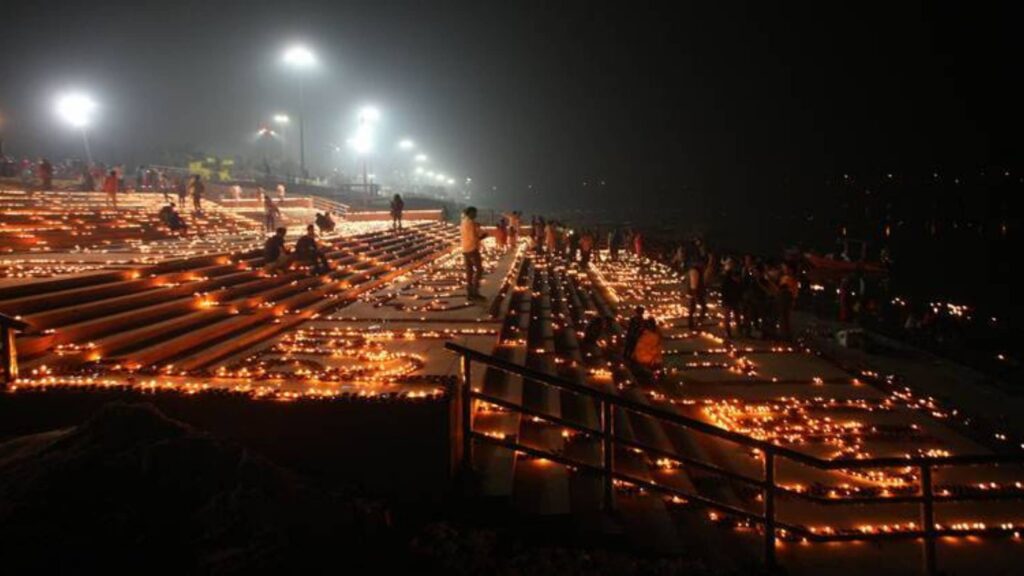
Varanasi, located in the state of Uttar Pradesh, holds special significance during Diwali due to its religious and cultural heritage. The city of Varanasi, also known as Kashi, is one of the oldest continuously inhabited cities in the world and is considered one of the holiest places in Hinduism. Devotees throng the ghats of the Ganges River to witness the grand Ganga Aarti, and the entire city is beautifully illuminated with thousands of oil lamps. During Diwali, Varanasi comes alive with vibrant celebrations, illuminations, and religious activities.
Here’s how Diwali is typically celebrated in Varanasi:
- Ganga Ghats Illumination: The ghats (riverfront steps leading to the river) of River Ganges in Varanasi are beautifully decorated with thousands of oil lamps and colorful lights. Devotees and tourists gather to witness the mesmerizing sight of the illuminated ghats. The reflections of the lights on the river create a magical ambiance.
- Special Ganga Aarti: A grand Ganga Aarti (prayer ritual dedicated to the river Ganges) is organized at the Dashashwamedh Ghat and other prominent ghats. Priests perform elaborate rituals, chant prayers, and offer lamps to the river goddess, seeking her blessings. Devotees participate in this spiritual ceremony with great devotion.
- Fireworks: Diwali is synonymous with fireworks. In Varanasi, the night sky is lit up with colorful fireworks, adding to the festive spirit. Families and friends gather to enjoy the dazzling display of fireworks and celebrate the victory of light over darkness.
- Decorations: Homes, temples, and public places are adorned with colorful rangoli (decorative art created on the floor using colored powders), flowers, and diyas (oil lamps). The streets of Varanasi are bustling with people shopping for decorative items, sweets, and gifts.
- Traditional Worship: Families perform special prayers and rituals at home, seeking the blessings of deities like Lord Ganesha and Goddess Lakshmi, who are worshipped during Diwali for prosperity and well-being.
- Sweets and Feasts: Diwali is a time for indulging in delicious sweets and festive meals. Traditional sweets like ladoos, jalebis, and gujiyas are prepared and shared with family and friends. Families come together for grand feasts, strengthening bonds and spreading joy.
- Community Celebrations: Apart from individual and family celebrations, Varanasi also witnesses various community events and cultural programs. Schools, colleges, and organizations organize Diwali events, including dance performances, music concerts, and dramas, showcasing the rich cultural heritage of the region.
Diwali in Varanasi is a time of immense joy, spirituality, and togetherness. The city’s historical and religious significance adds a unique charm to the celebrations, making it a must-visit destination for travelers seeking an authentic Diwali experience in India.
3. Amritsar, Punjab
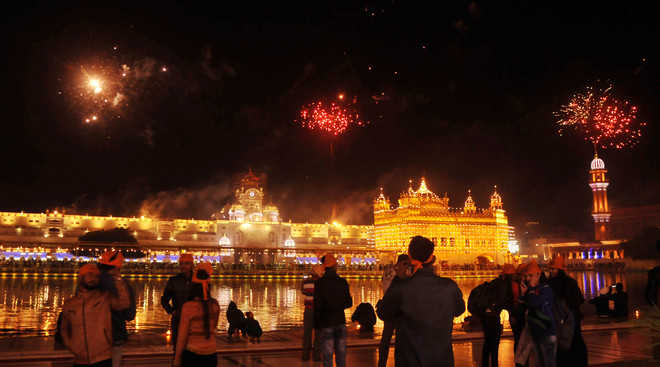
Diwali, the Festival of Lights, is celebrated with immense enthusiasm in Amritsar, Punjab. The city is known for its rich Sikh heritage, and Diwali here is marked by a unique blend of traditional customs and vibrant celebrations.
Here’s how Diwali is typically celebrated in Amritsar:
- Golden Temple Illumination: The Golden Temple, the holiest shrine in Sikhism, is beautifully illuminated with thousands of colorful lights on the occasion of Diwali. The sight of the glittering temple surrounded by the Amrit Sarovar (holy tank) is breathtaking and draws visitors from all over the world.
- Akhand Path Sahib: In the days leading up to Diwali, Sikhs often organize the Akhand Path Sahib, a continuous reading of the Guru Granth Sahib (the holy scripture of Sikhism). This reading, which lasts for 48 hours, is a special religious observance and is an integral part of Diwali preparations.
- Fireworks: Diwali in Amritsar, like in other parts of India, is celebrated with fireworks. The night sky is lit up with colorful and spectacular firework displays. Families, communities, and organizations gather to enjoy the fireworks and celebrate the festive spirit.
- Community Feasts: Diwali is a time for families and communities to come together and share delicious meals. Special Diwali delicacies and sweets are prepared, and people visit each other’s homes to exchange sweets and greetings.
- Gurdwara Decorations: Apart from the Golden Temple, other gurdwaras in Amritsar are also decorated with lights and flowers. Devotees visit these gurdwaras to offer prayers and seek blessings on the occasion of Diwali.
- Cleaning and Decoration: Like in many other parts of India, people in Amritsar clean and decorate their homes with rangoli, diyas, candles, and flowers. Homes and markets are adorned with colorful decorations, creating a festive atmosphere throughout the city.
- Gift Exchanges: Exchanging gifts and sweets is a common tradition during Diwali. People exchange gifts as a gesture of love and appreciation, strengthening relationships with family and friends.
- Nagar Kirtan Procession: In addition to the traditional Diwali celebrations, Amritsar also hosts a special Nagar Kirtan procession on the occasion of Bandi Chhor Divas, which usually falls around the same time as Diwali. This procession commemorates the release of Guru Hargobind Sahib Ji from imprisonment in Gwalior Fort. The procession features hymn singing, martial arts displays, and floats, making it a significant cultural and religious event in the city.
Diwali in Amritsar is a time of spiritual reflection, joy, and unity. The city’s unique cultural and religious heritage adds a distinctive flavor to the celebrations, making it a memorable experience for both residents and visitors alike.
4. Mumbai, Maharashtra

Diwali, the Festival of Lights, is celebrated with great enthusiasm in Mumbai, the bustling metropolis of Maharashtra. The city comes alive with vibrant decorations, grand illuminations, and a festive spirit that permeates every corner.
Here’s how Diwali is typically celebrated in Mumbai:
- Home Decorations: Mumbai residents clean and decorate their homes in the days leading up to Diwali. Homes are adorned with colorful rangoli (artistic patterns made on the floor with colored powders), diyas (oil lamps), candles, and fairy lights. Families also buy new clothes and utensils, a traditional practice during Diwali.
- Shopping Extravaganza: Diwali is a peak shopping season in Mumbai. People flock to markets and malls to purchase gifts, clothes, jewelry, home decor items, and sweets. Street markets like Colaba Causeway and Linking Road bustle with shoppers looking for festive bargains.
- Lavish Feasts: Diwali is a time for indulging in delicious sweets and festive meals. Mumbai, known for its diverse culinary scene, offers a wide variety of traditional sweets and snacks, including modaks, ladoos, chaklis, and gujiyas. Families and friends come together to share these delectable treats.
- Fireworks: Fireworks are a major highlight of Diwali celebrations in Mumbai. The night sky is lit up with colorful and elaborate firework displays. People gather on rooftops, open spaces, and along the coastline to enjoy the mesmerizing spectacle. However, there is a growing awareness about air and noise pollution, so eco-friendly celebrations are encouraged.
- Community Celebrations: Housing societies, neighborhoods, and cultural organizations organize community events and competitions. These events include rangoli competitions, talent shows, and cultural performances, fostering a sense of community spirit among residents.
- Religious Observances: Many Mumbaikars visit temples, including the Siddhivinayak Temple and Mahalakshmi Temple, to offer prayers and seek blessings during Diwali. Devotees participate in special pujas (prayer rituals) and aarti (devotional songs) at these temples.
- Marine Drive Illumination: Marine Drive, a picturesque promenade along the Arabian Sea, is beautifully illuminated during Diwali. The twinkling lights along the curved coastline create a stunning visual spectacle, attracting both locals and tourists.
- Charitable Activities: Diwali is a time for giving back to the community. Many individuals and organizations engage in charitable activities, such as distributing food, clothes, and gifts to the underprivileged, reflecting the spirit of compassion and sharing.
Diwali in Mumbai is a joyous and lively affair, reflecting the city’s vibrant culture and diverse population. The celebrations bring together people from various backgrounds, fostering a sense of unity and togetherness during this auspicious festival.
5. Delhi
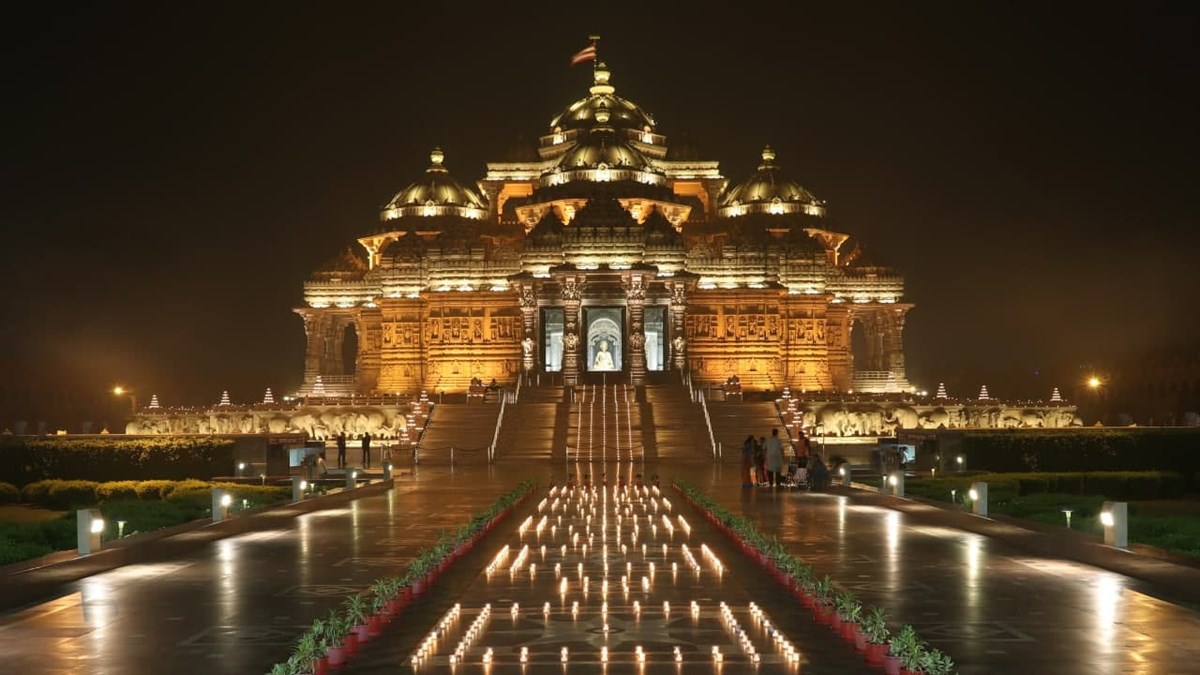
Diwali, the Festival of Lights, is celebrated with immense zeal and enthusiasm in Delhi, the capital city of India. The city becomes a dazzling spectacle during this time, with vibrant decorations, illuminations, and a festive atmosphere prevailing throughout.
Here’s how Diwali is typically celebrated in Delhi:
- Home Decorations: Delhi residents clean and decorate their homes weeks in advance. Homes are adorned with intricate rangoli designs, colorful lights, diyas (oil lamps), candles, and decorative items. People also buy new clothes and jewelry for themselves and their families.
- Shopping Extravaganza: Delhi is known for its bustling markets, and Diwali shopping is a major event. Popular markets like Chandni Chowk, Karol Bagh, and Lajpat Nagar are flooded with shoppers buying gifts, clothes, electronics, and decorative items. Delhi’s markets are particularly vibrant during the festival season.
- Fireworks: Fireworks are an integral part of Diwali celebrations in Delhi. Despite concerns about air and noise pollution, people indulge in bursting fireworks, lighting up the night sky with colorful displays. However, there is a growing awareness about the need for eco-friendly celebrations, and many individuals and communities opt for green and noiseless firecrackers.
- Community and Family Gatherings: Diwali is a time for families and friends to come together. People exchange sweets and gifts, visit each other’s homes, and share festive meals. Communities organize events like rangoli competitions, cultural performances, and talent shows, fostering a sense of camaraderie.
- Religious Observances: Delhi is home to several historic and revered temples. Devotees throng temples like the Akshardham Temple, Lotus Temple, and ISKCON Temple during Diwali, offering prayers and attending special aarti ceremonies. Many households also perform Lakshmi Puja (worship of the goddess of wealth) on the auspicious night of Diwali.
- Illumination of Landmarks: Landmarks and government buildings in Delhi, including India Gate, Red Fort, and the President’s House, are beautifully illuminated with colorful lights and decorations. The illumination adds to the festive spirit and creates a captivating atmosphere.
- Cultural Events: Delhi hosts various cultural events, including classical music and dance performances, Diwali melas (fairs), and art exhibitions. These events showcase the city’s rich cultural heritage and provide entertainment for residents and visitors alike.
- Charitable Activities: Many organizations and individuals in Delhi engage in charitable activities during Diwali, such as distributing food, clothes, and gifts to the underprivileged. Donations and community service projects are common during this time, reflecting the spirit of giving and sharing.
Diwali in Delhi is a grand and joyous celebration, reflecting the city’s diverse culture and traditions. The festival brings people from different communities and backgrounds together, fostering a sense of unity and celebration of the triumph of light over darkness.
These are just a few examples, and almost every city and town in India has its unique way of celebrating Diwali. Wherever you choose to celebrate, Diwali in India is an unforgettable experience filled with lights, colors, and joyous celebrations.

